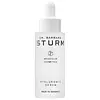What's inside
What's inside
 Key Ingredients
Key Ingredients

 Benefits
Benefits

 Concerns
Concerns

No concerns
 Ingredients Side-by-side
Ingredients Side-by-side

Water
Skin ConditioningPrunus Amygdalus Dulcis Oil
Skin ConditioningDicaprylyl Carbonate
EmollientGlycerin
HumectantOctyldodecanol
EmollientLactobacillus/Portulaca Oleracea Ferment Extract
AntioxidantCetearyl Alcohol
EmollientGlyceryl Stearate
EmollientEchium Plantagineum Seed Oil
Skin ConditioningHelianthus Annuus Seed Oil Unsaponifiables
EmollientBiosaccharide Gum-1
HumectantLeuconostoc/Radish Root Ferment Filtrate
AntimicrobialCardiospermum Halicacabum Flower/Leaf/Vine Extract
Skin ConditioningPanthenol
Skin ConditioningPhenoxyethanol
PreservativeSodium Lauroyl Glutamate
Stearic Acid
CleansingDimethicone
EmollientCarbomer
Emulsion StabilisingEthylhexylglycerin
Skin ConditioningSodium Hydroxide
BufferingPantolactone
HumectantTocopherol
AntioxidantCitric Acid
BufferingWater, Prunus Amygdalus Dulcis Oil, Dicaprylyl Carbonate, Glycerin, Octyldodecanol, Lactobacillus/Portulaca Oleracea Ferment Extract, Cetearyl Alcohol, Glyceryl Stearate, Echium Plantagineum Seed Oil, Helianthus Annuus Seed Oil Unsaponifiables, Biosaccharide Gum-1, Leuconostoc/Radish Root Ferment Filtrate, Cardiospermum Halicacabum Flower/Leaf/Vine Extract, Panthenol, Phenoxyethanol, Sodium Lauroyl Glutamate, Stearic Acid, Dimethicone, Carbomer, Ethylhexylglycerin, Sodium Hydroxide, Pantolactone, Tocopherol, Citric Acid
 Reviews
Reviews

Ingredients Explained
These ingredients are found in both products.
Ingredients higher up in an ingredient list are typically present in a larger amount.
Ethylhexylglycerin (we can't pronounce this either) is commonly used as a preservative and skin softener. It is derived from glyceryl.
You might see Ethylhexylglycerin often paired with other preservatives such as phenoxyethanol. Ethylhexylglycerin has been found to increase the effectiveness of these other preservatives.
Lactobacillus/Portulaca Oleracea Ferment Extract is an antioxidant.
Leuconostoc/Radish Root Ferment Filtrate is a natural preservative. It comes from fermenting radish roots with a bacteria called leuconostoc.
Leuconostoc comes from lactic acid.
This ingredient has antimicrobial properties and helps prevent the growth of bacteria in a product.
Leuconostoc is used to make the traditional Korean side-dish, kimchi. It is also used to make sourdough bread (both incredibly yummy foods).
Learn more about Leuconostoc/Radish Root Ferment FiltratePhenoxyethanol is a preservative that has germicide, antimicrobial, and aromatic properties. Studies show that phenoxyethanol can prevent microbial growth. By itself, it has a scent that is similar to that of a rose.
It's often used in formulations along with Caprylyl Glycol to preserve the shelf life of products.
Water. It's the most common cosmetic ingredient of all. You'll usually see it at the top of ingredient lists, meaning that it makes up the largest part of the product.
So why is it so popular? Water most often acts as a solvent - this means that it helps dissolve other ingredients into the formulation.
You'll also recognize water as that liquid we all need to stay alive. If you see this, drink a glass of water. Stay hydrated!
Learn more about Water